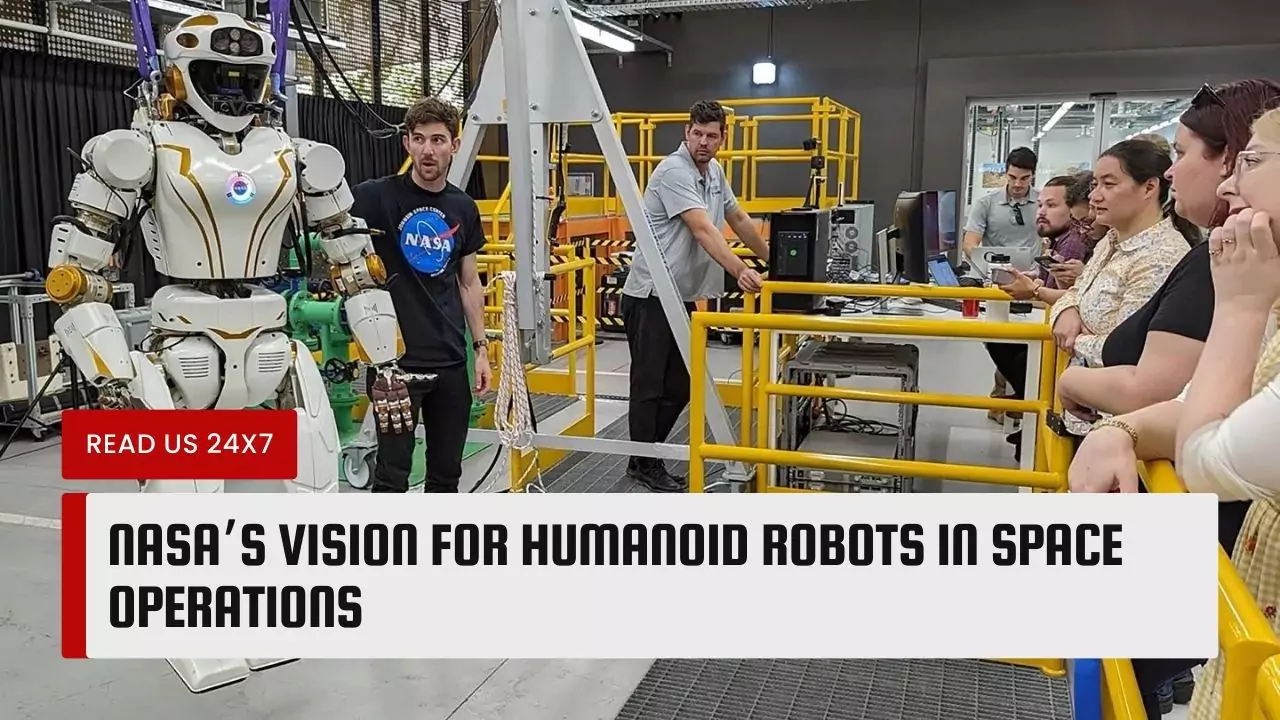NASA is planning to send human-like robots to space as part of its ambitious goals to explore the solar system and beyond. These robots, also known as humanoid robots, are designed to mimic the appearance and capabilities of humans, such as walking, grasping, and manipulating objects. NASA hopes that these robots will be able to assist astronauts in various tasks, such as building structures, conducting experiments, and maintaining equipment.
The Role of Robots in Space Exploration
Humanoid Robots in Space: The Next Frontier
Robots have been playing an important role in space exploration for decades, from the first lunar landing to the current Mars rover missions. However, most of these robots are either remotely controlled or pre-programmed to perform specific tasks. Humanoid robots, on the other hand, are expected to have more autonomy and intelligence, as well as the ability to adapt to changing environments and situations. Humanoid robots are also more compatible with human-designed habitats and tools, which makes them ideal for working alongside humans in space.
Benefits of Using Robots in Space Missions
There are many benefits of using robots in space missions, especially in harsh and dangerous environments. Some of the benefits are:
- Robots can perform tasks that are too risky or impossible for humans, such as exploring extreme terrains, handling hazardous materials, and surviving extreme temperatures and radiation.
- Robots can reduce the cost and complexity of space missions, as they do not require life support systems, food, water, or medical care.
- Robots can enhance the productivity and safety of human astronauts, by providing assistance, companionship, and backup in case of emergencies.
- Robots can extend the duration and scope of space missions, as they do not suffer from fatigue, boredom, or psychological stress.
NASA’s Plans to Send Human-like Robots to Space
Collaboration with Sierra Space’s Dream Chaser
One of NASA’s plans to send human-like robots to space is to collaborate with Sierra Space, a private aerospace company, to use their Dream Chaser spacecraft as a platform for launching and transporting robots. The Dream Chaser is a reusable spaceplane that can carry up to seven passengers or cargo to low Earth orbit and back. NASA has awarded Sierra Space a contract to provide cargo delivery services to the International Space Station (ISS) using the Dream Chaser. NASA also intends to use the Dream Chaser to send humanoid robots to the ISS and other destinations, such as the lunar Gateway, a planned outpost in orbit around the moon.
Development of New Technologies for the Mission
Another plan of NASA is to develop new technologies for the mission, such as advanced robotics, artificial intelligence, and human-robot interaction. NASA has been working on several humanoid robot projects, such as:
- Robonaut 2, a humanoid robot that was sent to the ISS in 2011 and performed various tasks, such as flipping switches, installing hardware, and cleaning surfaces.
- Valkyrie, a humanoid robot that was designed to compete in the DARPA Robotics Challenge, a competition that aimed to develop robots that can assist humans in disaster response scenarios.
- R5, a humanoid robot that was developed as a successor to Valkyrie, with improved mobility, dexterity, and perception.
- Astrobee, a free-flying robot that can navigate autonomously in the ISS, perform inspections, monitor environmental conditions, and assist astronauts with tasks.
NASA plans to further improve these robots and equip them with new capabilities, such as:
- Enhanced vision, hearing, and touch sensors, to enable the robots to perceive and understand their surroundings better.
- Natural language processing and speech recognition, to enable the robots to communicate with humans and other robots using voice commands and gestures.
- Machine learning and reasoning, to enable the robots to learn from their experiences and make decisions based on their goals and constraints.
- Social and emotional skills, to enable the robots to express and respond to emotions, as well as to cooperate and collaborate with humans and other robots.
Potential Applications for Human-like Robots in Space
Building Structures on the Moon
One of the potential applications for human-like robots in space is to build structures on the moon, such as habitats, observatories, and power plants. Human-like robots can use their humanoid form and skills to assemble and operate human-designed equipment and materials, as well as to adapt to the lunar environment and terrain. Human-like robots can also work in teams with other robots and humans, to coordinate and optimize their tasks and resources.
Conducting Research and Experiments
Another potential application for human-like robots in space is to conduct research and experiments, such as studying the geology, biology, and physics of the moon and other celestial bodies, as well as testing new technologies and materials for future space missions. Human-like robots can use their humanoid form and skills to handle and manipulate various instruments and samples, as well as to perform complex and delicate procedures. Human-like robots can also work in teams with other robots and humans, to share and analyze data and findings.
Supporting Astronauts on Long Duration Space Flights
Another potential application for human-like robots in space is to support astronauts on long duration space flights, such as to Mars and beyond. Human-like robots can use their humanoid form and skills to assist astronauts in various tasks, such as maintaining the spacecraft, monitoring the health and well-being of the crew, and providing entertainment and companionship. Human-like robots can also work in teams with other robots and humans, to cope with the challenges and risks of deep space exploration.
Impact of Human-like Robots in Space Exploration
Increases Efficiency and Safety
The impact of human-like robots in space exploration is that they can increase the efficiency and safety of space missions, by performing tasks that are faster, cheaper, and safer than humans. Human-like robots can also complement and augment the capabilities of human astronauts, by providing assistance, backup, and expertise. Human-like robots can also reduce the human factors that can affect the performance and outcome of space missions, such as fatigue, stress, and isolation.
Opens up New Possibilities for Space Exploration
Another impact of human-like robots in space exploration is that they can open up new possibilities for space exploration, by enabling missions that are otherwise too difficult or impossible for humans. Human-like robots can also expand the scope and scale of space exploration, by reaching and exploring more destinations, such as asteroids, comets, and moons. Human-like robots can also extend the duration and frequency of space exploration, by staying and operating in space for longer periods of time, and by being reusable and recyclable.
Advances in Technology and Innovation
Another impact of human-like robots in space exploration is that they can advance the technology and innovation in the field of robotics, artificial intelligence, and space engineering. Human-like robots can also inspire and motivate the scientific and public interest in space exploration, by demonstrating the achievements and potential of human-robot collaboration. Human-like robots can also contribute to the social and economic development of humanity, by creating new opportunities and benefits for education, industry, and society.



